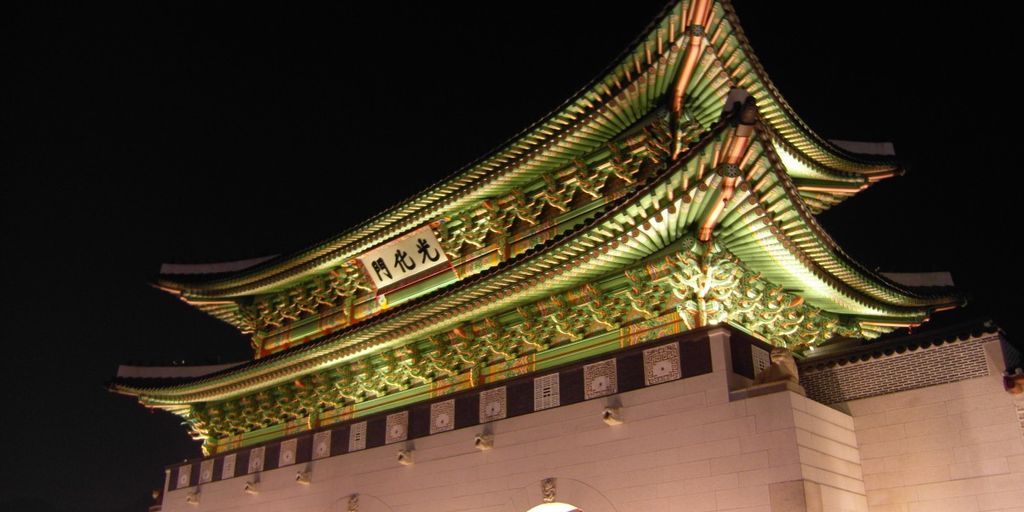South Korea is a land where ancient history and modernity coexist harmoniously. From the royal palaces of Seoul to the serene temples nestled in its mountains, Korea offers a rich tapestry of historical sites that tell the story of its past. This article takes you on a journey through time, exploring the most significant historical landmarks that have shaped Korean culture and heritage.
Key Takeaways
- South Korea boasts a diverse range of historical sites, from ancient tombs and temples to royal palaces and battlefields.
- Gyeongju, the ancient capital of Silla, is home to remarkable sites like Bulguksa Temple and Seokguram Grotto.
- Seoul’s royal palaces, including Gyeongbokgung and Changdeokgung, offer a glimpse into the grandeur of the Joseon Dynasty.
- The historic villages of Korea, such as Hahoe and Yangdong, preserve the traditional Korean way of life.
- The battlefields and memorials of the Korean War serve as poignant reminders of the country’s turbulent history and enduring resilience.
Gyeongju: The Ancient Capital of Silla
Gyeongju is often called the "Museum without Walls" because of its many historical and cultural treasures. The city is famous for preserving ancient relics from the Silla Kingdom. UNESCO has named the entire city a world cultural heritage site. Here, you can explore ancient temples, royal tombs, and other historical sites that showcase the rich cultural heritage of the Silla Kingdom.
The Royal Palaces of Seoul
Gyeongbokgung Palace: The Heart of the Joseon Dynasty
Gyeongbokgung Palace is the main and largest of the five palaces in Seoul. Built in 1395 under King Taejo’s orders during the Joseon Dynasty, the palace is located in the center of Seoul and keeps his majesty. As a background, you can see the inner-city mountains giving a harmonious view between nature and the palace.
Changdeokgung Palace: A UNESCO World Heritage Site
Not far from Gyeongbokgung palace stands the second most popular palace in Seoul: Changdeokgung Palace. It has been built in 1405 as a secondary residence for kings and queens and has its charm. The palace is divided into different sections: the government official areas and the royal private areas (the King’s apartments, the Queen’s apartments, the King’s mother apartments, …). Gyeonghoeru and Hyangwonjeong are two outstanding pavilions to see giving a peaceful atmosphere to the palace.
You can feel just by walking in the alleys of the palace the harmony with nature, making this place a tranquil area compared to Gyeongbokgung palace, more majestic and built to represent the sovereign power of the King. Changdeokgung Palace is in the UNESCO World Heritage List since 1997.
Deoksugung Palace: A Blend of Western and Korean Architecture
Deoksugung Palace is unique among Seoul’s palaces for its combination of Western and Korean architecture. The palace grounds feature a mix of traditional Korean buildings and Western-style structures, reflecting the period of modernization in Korea during the late 19th and early 20th centuries. One of the highlights of Deoksugung Palace is the changing of the guard ceremony, which offers a glimpse into Korea’s royal past.
The Historic Villages of Korea
Hahoe Folk Village: A Glimpse into Joseon-Era Life
Hahoe Folk Village, located in Gyeongsangbuk-do province, is home to descendants of the Ryu clan of Pungsan. The village is well-known for its 230 traditional houses from the Joseon dynasty. You can feel how was Korean life 600 years ago during the Joseon dynasty. The village was the residential area of high-ranking government officials, nobles, and influential families. Nowadays, it is still a residential area, so please stay quiet while visiting the village.
Yangdong Village: Preserving Korea’s Cultural Heritage
Yangdong Village is another beautiful example of a traditional Korean village. It is recognized for its well-preserved cultural heritage and traditional Korean houses. The village offers a unique glimpse into the past, showcasing the lifestyle and architecture of the Joseon dynasty.
Nagan Eupseong Folk Village: A Fortress Town Frozen in Time
Nagan Eupseong Folk Village is a fortress town that has been frozen in time. The village is surrounded by well-preserved stone walls and features traditional thatched-roof houses. Walking through the village, you can experience the historical ambiance and imagine what life was like centuries ago.
Visiting these historic villages is like taking a journey back in time. Each village offers a unique perspective on Korea’s rich cultural heritage and history.
The Sacred Temples of Korea

Haeinsa Temple: Home to the Tripitaka Koreana
Another must-visit destination is the Haeinsa Temple, a UNESCO World Heritage Site. Located in Hapcheon County, this temple is home to the Tripitaka Koreana, the most complete collection of Buddhist scriptures in East Asia. The serene atmosphere and intricate architectural details make it a truly spiritual experience.
Jogyesa Temple: The Center of Korean Buddhism
Jogyesa Temple is the center of Korean Buddhism and a place of great historical significance. It is known for its beautiful lotus lanterns and vibrant festivals. Visitors can experience traditional Buddhist ceremonies and enjoy the peaceful surroundings.
Beomeosa Temple: A Spiritual Sanctuary in Busan
Beomeosa Temple, located in Busan, is a spiritual sanctuary that offers a tranquil escape from the bustling city. The temple is surrounded by lush forests and is known for its stunning architecture and serene ambiance. It’s a perfect place for meditation and reflection.
The Battlefields of the Korean War
The DMZ: A Symbol of Division and Hope
The DMZ was created on July 27, 1953, when the Armistice Agreement was signed during the Korean War (1950 – 1953). It divides the Korean peninsula and resulted from the separation of the country giving birth to the famous 2-divided nations: South Korea and North Korea. Along this demarcation line have been found a lot of vestiges from the Korean War. The most popular one are in Paju and the closest to Seoul.
Incheon Landing Operation Memorial Hall: Remembering a Turning Point
Visitors to the memorial hall can immerse themselves in the past through the extensive display of wartime artifacts, including weapons, uniforms, and equipment from both North and South Korean troops. The moving images depicting the Battle of Incheon bring alive the historical events, offering a deep dive into the city’s legacy. This site is a must-visit for those interested in Incheon’s historical preservation and the dramatic events that shaped its past.
The War Memorial of Korea: Honoring the Fallen Heroes
A pivotal site in Incheon’s history is the Incheon Landing Operation Memorial Hall. Established to commemorate the brave soldiers who fought under General MacArthur during the Korean War, this memorial hall is a significant reminder of Incheon’s role in South Korean history. The hall is not only a tribute to the 100th Anniversary of the Opening of Incheon to Foreigners in 1883 but also a landmark of the successful Landing Operation, a turning point during the war.
The Ancient Tombs and Burial Mounds
Daereungwon Tomb Complex: Resting Place of Silla Kings
The Daereungwon Tomb Complex is a fascinating site where you can explore the resting place of Silla kings. This area is home to numerous large burial mounds, each containing the remains of ancient royalty. As you walk through the complex, you’ll encounter various archaeological relics and structures that date back thousands of years.
Tomb of King Muryeong: A Royal Burial Site
The most popular tomb is the one of King Muryeong (462 – 523) and his wife. It gathers around 2,900 artifacts, most of them are displayed in the National Gongju Museum. You can’t enter the tombs, but it is still a nice walk to see.
Goryeong Daegaya Tumuli: Ancient Burial Mounds of the Daegaya Kingdom
One of the highlights is the Daegaya Tumuli Park, a vast burial ground featuring hundreds of ancient tombs. These tombs, adorned with striking stone artifacts and unique cultural symbols, provide a captivating insight into the burial customs of ancient Daegaya.
As you wander through the Daegaya Historic Sites, every step unveils the secrets of the past. So, pack your bags and get ready to embark on an unforgettable adventure to the Daegaya Historic Sites.
The Fortresses and Castles of Korea
Korea is home to many historic fortresses and castles that tell the stories of its past. These structures were built for defense, royal residence, and as symbols of power. Let’s explore some of the most famous ones.
Visiting these fortresses and castles offers a glimpse into Korea’s rich history and architectural ingenuity.
Conclusion
In conclusion, Korea’s historical sites offer a captivating journey through time, revealing the rich tapestry of the nation’s past. From the ancient kingdoms and dynasties to the modern era, each site tells a unique story that contributes to Korea’s cultural heritage. Whether you’re exploring the serene temples, majestic palaces, or ancient fortresses, these historical landmarks provide a profound insight into the country’s history and traditions. As you walk through these sites, you not only witness the architectural marvels but also connect with the spirit of the people who shaped Korea’s history. So, pack your bags and embark on this unforgettable journey through time, where every step brings you closer to understanding the essence of Korea.
Frequently Asked Questions
What is the significance of Gyeongju in Korean history?
Gyeongju served as the capital of the Silla Kingdom for nearly a thousand years and is home to numerous historical sites, including temples, palaces, and tombs.
What can I expect to see at Bulguksa Temple?
Bulguksa Temple is renowned for its beautiful architecture and intricate stone carvings, making it a masterpiece of Buddhist art.
Why is the DMZ an important historical site?
The DMZ (Demilitarized Zone) is a symbol of the division between North and South Korea and serves as a poignant reminder of the Korean War.
What makes Changdeokgung Palace a UNESCO World Heritage Site?
Changdeokgung Palace is recognized for its outstanding architecture and harmonious integration with the natural landscape, exemplifying the beauty of Korean palace design.
How can I visit the ancient tombs in Korea?
Many ancient tombs, such as the Daereungwon Tomb Complex and the Tomb of King Muryeong, are open to the public and can be visited as part of guided tours or independently.
What is unique about the historic villages like Hahoe and Yangdong?
These villages offer a glimpse into traditional Korean life during the Joseon Dynasty and are well-preserved examples of Korea’s cultural heritage.

